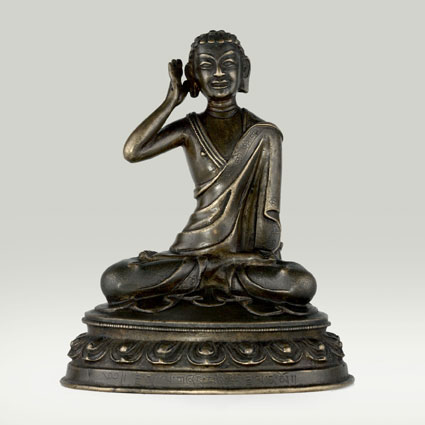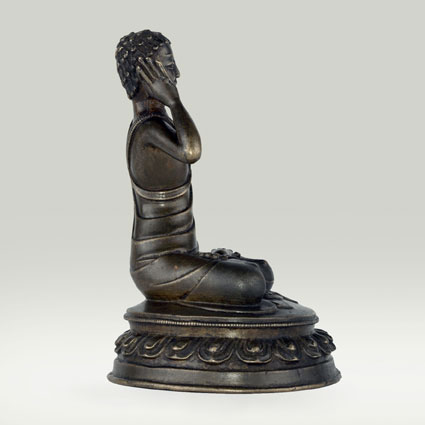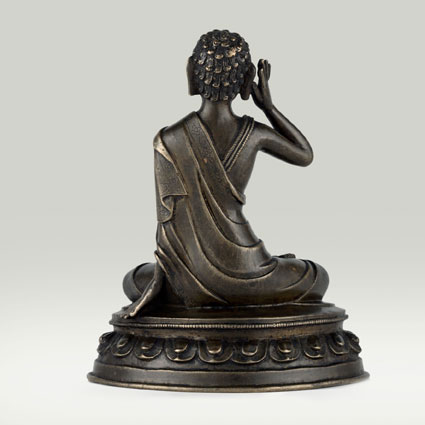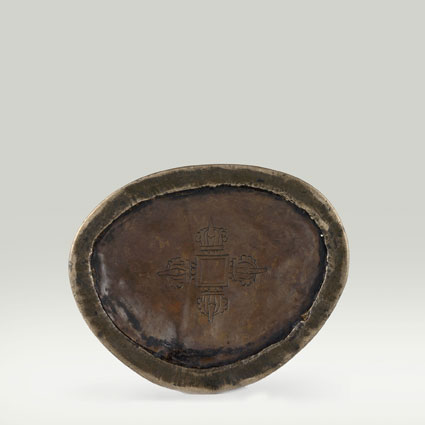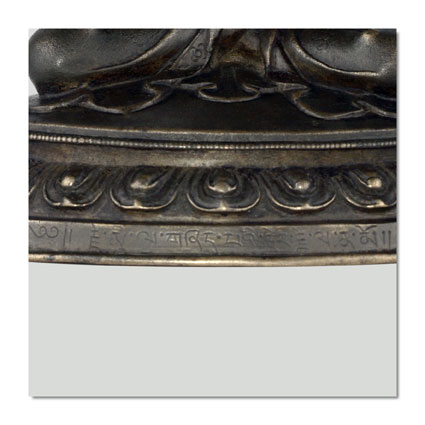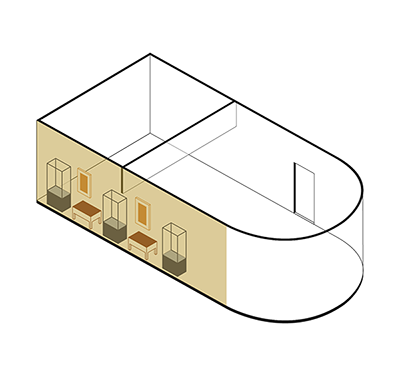ABS 149
Code: ABS 149
Country: Tibet
Style:
Date: 1450 - 1550
Dimensions in cm WxHxD: 9.2 x 11.2 x 7.5
Materials: Brass
Milarepa (1040-1123) – The "Cotton-clad" Yogin
The famous yogin Milarepa is here represented in his typical singing gesture, his right hand held to his ear while resting on his left hand propped up on the pedestal behind his left thigh. Sitting legs crossed in the meditation posture on a lotus pedestal, his slender body his clad in a cotton shawl, a meditation belt crossing his chest. His smiling face refers to his secret name Mila Shepé Dorjé, “Mila the Laughing Vajra”, as indicated on the inscription on the front of the lotus seat. Very sober in style, the statue is discretely decorated with floral pattern on the shawl’s rim. Note that the treatment of his curly locks of hair is very similar to the other statue ABS 359.
After a childhood marked by the death of his father and family betrayals, he experienced revenge and remorse. He became a disciple Marpa the Translator (1012-1097) who granted him teachings and initiations. Living as a wondering yogin dressed only in cotton, he gained his name of Milarepa, “cotton-clad Mila”. After he attained spiritual liberation, he was joined by numerous disciples, and became a very famous master. Teaching others through spiritual songs, the story of his life and collection of teachings are called “The Hundred thousand Songs”. His life of wandering ascetic is considered a model of individual transformation. A most beloved religious figure of Tibet, Milarepa is considered the yogin “par excellence”.
The famous yogin Milarepa is here represented in his typical singing gesture, his right hand held to his ear while resting on his left hand propped up on the pedestal behind his left thigh. Sitting legs crossed in the meditation posture on a lotus pedestal, his slender body his clad in a cotton shawl, a meditation belt crossing his chest. His smiling face refers to his secret name Mila Shepé Dorjé, “Mila the Laughing Vajra”, as indicated on the inscription on the front of the lotus seat. Very sober in style, the statue is discretely decorated with floral pattern on the shawl’s rim. Note that the treatment of his curly locks of hair is very similar to the other statue ABS 359.
After a childhood marked by the death of his father and family betrayals, he experienced revenge and remorse. He became a disciple Marpa the Translator (1012-1097) who granted him teachings and initiations. Living as a wondering yogin dressed only in cotton, he gained his name of Milarepa, “cotton-clad Mila”. After he attained spiritual liberation, he was joined by numerous disciples, and became a very famous master. Teaching others through spiritual songs, the story of his life and collection of teachings are called “The Hundred thousand Songs”. His life of wandering ascetic is considered a model of individual transformation. A most beloved religious figure of Tibet, Milarepa is considered the yogin “par excellence”.

